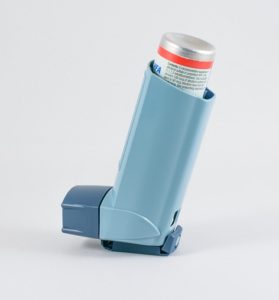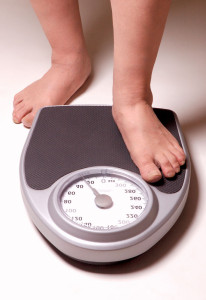North Carolina is typically known for its mild winters. 2018 looks to be off to a very chilly start!
People who suffer from asthma may be caught off guard when the weather forecast turns unusually cold. As with most things, preparation is the key to keeping asthma under control.
Cold Air = Increased Lung Inflammation
 When you step outside and take a deep breath in cold air – it’s shocking – you feel like you can’t take a deep breath. While breathing in cold air can be uncomfortable for anyone, people who suffer from asthma need to be more cautious.
When you step outside and take a deep breath in cold air – it’s shocking – you feel like you can’t take a deep breath. While breathing in cold air can be uncomfortable for anyone, people who suffer from asthma need to be more cautious.
Cold air can shock the lungs of people with asthma. This shock can cause inflammation – which may lead to an asthma attack. Breathing can become more challenging since cold air also constricts airways. While those with asthma may be able to tolerate breathing in cold air for a few minutes, exercising outside could be dangerous.
Don’t forget that cold winter air is also drier, another potential airway irritant for those who suffer from asthma. Wind can also stir up more dust and other allergens.
Minimize the impact of Cold Weather
- Consider exercising indoors. If you do exercise outdoors make sure to warm up properly.
- Take your asthma medication 10 to 15 minutes prior to heading outside into the cold air.
- Wear a scarf or a mask over your nose and mouth when outdoors to help warm the air entering your lungs. Mom was right, dress in layers and wear a hat!
- On days where extremely cold temperatures are in the forecast plan to minimize the time you spend outside.
Remember that spending more time indoors can increase your exposure to the many indoor allergens and asthma triggers. Dampness and mold are two common indoor asthma triggers. Adding some indoor humidity can help keep nasal passages from drying out, but watch for signs of too much humidity like mold and mildew.
In general, the winter is cold and flu season. Encourage children to cover their mouths and noses when they cough or sneeze. Frequent hand washing and avoiding those who are sick can help everyone stay healthy and happy this winter.















 We hear all the time from multiple sources to get more exercise. Everyone has their reasons for not getting enough. We all know we should do it more, but feel like we don’t have enough time or energy to do so. If you suffer from asthma, you may fear that working out would make your symptoms worse. Here are some of the best options for exercising with asthma
We hear all the time from multiple sources to get more exercise. Everyone has their reasons for not getting enough. We all know we should do it more, but feel like we don’t have enough time or energy to do so. If you suffer from asthma, you may fear that working out would make your symptoms worse. Here are some of the best options for exercising with asthma Asthma is a challenging, but very treatable illness. There are many medications and tools available to help relieve symptoms. Did you know that asthma prevention can start in your kitchen? Not all foods are created equal. What foods might be best for asthmatics? There are even healthy foods that may worsen your asthma symptoms.
Asthma is a challenging, but very treatable illness. There are many medications and tools available to help relieve symptoms. Did you know that asthma prevention can start in your kitchen? Not all foods are created equal. What foods might be best for asthmatics? There are even healthy foods that may worsen your asthma symptoms. Music is a wonderful stress release for many people. For some, the release comes from listening to the music and relating to the lyrics. It strikes a chord inside of us all. For others, making music is the release. Whether you play an instrument or sing, you are successfully dissolving the stress of your day-to-day. Congratulations! You have found an outlet.
Music is a wonderful stress release for many people. For some, the release comes from listening to the music and relating to the lyrics. It strikes a chord inside of us all. For others, making music is the release. Whether you play an instrument or sing, you are successfully dissolving the stress of your day-to-day. Congratulations! You have found an outlet. Federal Bill
Federal Bill  Summer is coming to a close for students in North Carolina. The change of seasons and environment can spell trouble for asthma and allergy sufferers. They already know their at-home triggers and how to combat them, but have less control over their environment at school. Common classroom triggers include pollen, dust mites, mold, chalk dust, and pet dander. With the help of school administrators and parents, students can remain focused on their studies and less on their allergies.
Summer is coming to a close for students in North Carolina. The change of seasons and environment can spell trouble for asthma and allergy sufferers. They already know their at-home triggers and how to combat them, but have less control over their environment at school. Common classroom triggers include pollen, dust mites, mold, chalk dust, and pet dander. With the help of school administrators and parents, students can remain focused on their studies and less on their allergies.

 Food industry workers at a microwave popcorn factory were the first to get sick from inhaling the vapors from artificial flavorings. The vapors caused symptoms such as coughing, wheezing, and shortness of breath, similar to those of chronic obstructive pulmonary disease (COPD).
Food industry workers at a microwave popcorn factory were the first to get sick from inhaling the vapors from artificial flavorings. The vapors caused symptoms such as coughing, wheezing, and shortness of breath, similar to those of chronic obstructive pulmonary disease (COPD). Plants are frequently used to mediate the effects of pollution and toxins in our external environment. Our indoor environments can contain toxins such as volatile organic compounds (VOCs). Two common indoor VOC pollutants are benzene and formaldehyde. Benzene can be found in plastics, fabrics, pesticides, and cigarette smoke. Common household items such as dish detergent, fabric softener, and carpet cleaners all may contain formaldehyde.
Plants are frequently used to mediate the effects of pollution and toxins in our external environment. Our indoor environments can contain toxins such as volatile organic compounds (VOCs). Two common indoor VOC pollutants are benzene and formaldehyde. Benzene can be found in plastics, fabrics, pesticides, and cigarette smoke. Common household items such as dish detergent, fabric softener, and carpet cleaners all may contain formaldehyde.
 Spring is in the air, and as temperatures rise, an asthmatic’s symptoms reach their peak.
Spring is in the air, and as temperatures rise, an asthmatic’s symptoms reach their peak.  It’s no secret that tobacco is one of the most common asthma triggers. Tobacco smoke irritates the airways and causes your lungs to produce more mucus. In addition, it weakens the tiny hairs called cilia that sweep away mucus and other irritants that settle in your airways.
It’s no secret that tobacco is one of the most common asthma triggers. Tobacco smoke irritates the airways and causes your lungs to produce more mucus. In addition, it weakens the tiny hairs called cilia that sweep away mucus and other irritants that settle in your airways. Most people are aware of the most common asthma triggers which are referred to as the 3 Ps: pets, pollen, and pollution. Recent studies have brought a new one to light – sugar. The reason? Sugar causes inflammation of the airways. I bet you didn’t know that a little sugar could cause such a reaction.
Most people are aware of the most common asthma triggers which are referred to as the 3 Ps: pets, pollen, and pollution. Recent studies have brought a new one to light – sugar. The reason? Sugar causes inflammation of the airways. I bet you didn’t know that a little sugar could cause such a reaction.

 Over the last two decades, asthma and obesity have reached epidemic proportions. Obesity is a common comorbidity to asthma and it is commonly thought that obesity precedes the asthma symptoms. Now, the question has been raised about whether it is the other way around. Does obesity follow on the heels of asthma or is it asthma that raises the likelihood of becoming overweight?
Over the last two decades, asthma and obesity have reached epidemic proportions. Obesity is a common comorbidity to asthma and it is commonly thought that obesity precedes the asthma symptoms. Now, the question has been raised about whether it is the other way around. Does obesity follow on the heels of asthma or is it asthma that raises the likelihood of becoming overweight?
 What if all it took was a little sunshine to lower your baby’s risk for asthma? In a recent study, researchers have observed that women with more vitamin D in their second trimester lowered their babies’ risk for asthma.
What if all it took was a little sunshine to lower your baby’s risk for asthma? In a recent study, researchers have observed that women with more vitamin D in their second trimester lowered their babies’ risk for asthma. 












